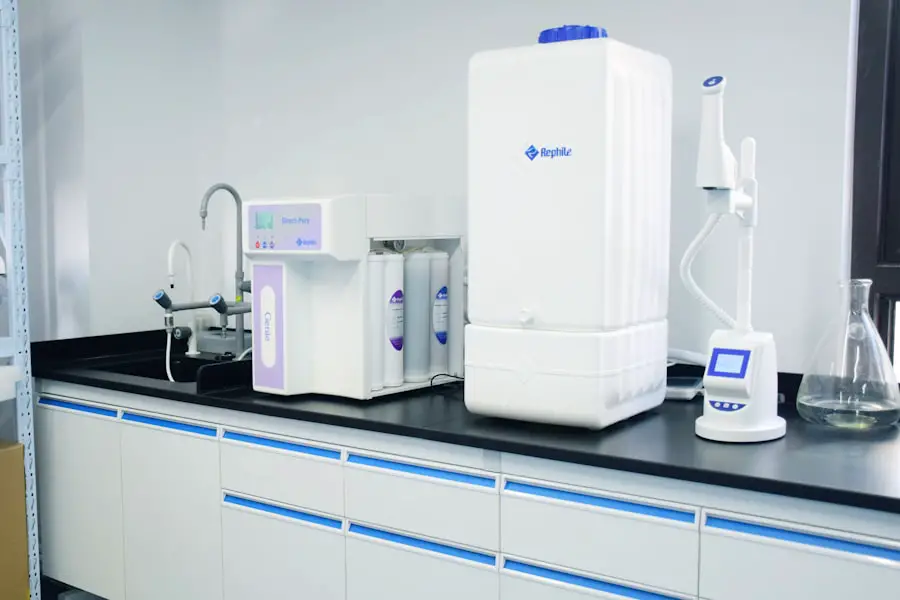In the realm of computing, the term “PC name” refers to the unique identifier assigned to a computer within a network. This name serves as a crucial element for various networking functions, allowing devices to communicate effectively and ensuring that users can easily identify their machines among multiple devices. In Windows operating systems, including the latest iteration, Windows 11, the PC name plays a significant role in both local and networked environments.
It is particularly important for users who operate in multi-device settings, such as offices or shared networks, where distinguishing between different computers is essential for efficient operation. The PC name is not merely a label; it can influence how software applications interact with the system and how network resources are accessed. For instance, when sharing files or printers over a network, the PC name is used to identify the source and destination devices.
Additionally, users may want to customize their PC names for personal preference or organizational purposes. Understanding how to access and modify the PC name in Windows 11 is therefore an essential skill for both casual users and IT professionals alike.
Key Takeaways
- PC Name is a unique identifier for a computer on a network and is essential for various network-related tasks.
- In Windows 11, you can access the PC Name by navigating to Settings > System > About.
- The PC Name can also be found through the Command Prompt by typing “hostname” and pressing Enter.
- To locate the PC Name in Control Panel, go to System and Security > System, and the PC Name will be displayed under “Computer name, domain, and workgroup settings.”
- In File Explorer, you can find the PC Name by right-clicking on This PC, selecting Properties, and then viewing the PC Name under “Computer name, domain, and workgroup settings.”
- PowerShell users can access the PC Name by using the command “$env:COMPUTERNAME” to display the computer name.
- Managing the PC Name in Windows 11 is important for network connectivity and security, and it’s recommended to choose a unique and easily identifiable name for your PC.
Accessing PC Name in Windows 11
Accessing the PC name in Windows 11 can be accomplished through several straightforward methods, each catering to different user preferences and technical expertise. The most common approach involves navigating through the system settings, which provides a user-friendly interface for managing various aspects of the operating system. To begin, users can click on the Start menu and select the Settings icon, which resembles a gear.
Once in the Settings window, they should navigate to the “System” section, where they will find an option labeled “About.” This section contains vital information about the device, including its specifications and, importantly, the PC name. Alternatively, users can also access their PC name through the Windows search function. By clicking on the magnifying glass icon on the taskbar or pressing the Windows key and typing “PC name,” users can quickly locate relevant settings without having to navigate through multiple menus.
This method is particularly useful for those who prefer a more direct approach to accessing system information. Regardless of the method chosen, Windows 11 ensures that users can easily find their PC name with minimal effort.
Locating PC Name in System Settings

Once users have accessed the System settings in Windows 11, locating the PC name is a straightforward process. In the “About” section, users will encounter a wealth of information about their device, including its specifications such as processor type, RAM size, and system type (32-bit or 64-bit). Among these details, the PC name is prominently displayed under the “Device specifications” heading.
This section not only provides the current name assigned to the computer but also offers options for renaming it if desired. Renaming a PC in Windows 11 is a simple task that can enhance user experience, especially in environments where multiple devices are present. To rename the PC, users can click on the “Rename this PC” button located within the same “About” section.
A dialog box will appear, prompting users to enter a new name that adheres to specific naming conventions—such as avoiding special characters and keeping it within a certain character limit. After entering the desired name, users can confirm their choice, and Windows will prompt them to restart the computer for changes to take effect.
Finding PC Name through Command Prompt
| Command | Description |
|---|---|
| hostname | Returns the name of the current PC |
| ipconfig /all | Displays detailed information about the network connections, including the host name |
| echo %COMPUTERNAME% | Prints the computer name in the command prompt |
For those who prefer a more technical approach or are accustomed to using command-line interfaces, finding the PC name through Command Prompt is an efficient alternative. Command Prompt is a powerful tool that allows users to execute various commands directly within Windows. To access Command Prompt, users can type “cmd” into the Windows search bar and select the application from the results.
Once open, they can enter a specific command to retrieve their PC name. The command to find the PC name is straightforward: users should type `hostname` and press Enter. This command will return the current name of the computer instantly.
Alternatively, users can also use the command `ipconfig /all`, which provides detailed network configuration information, including the hostname listed under “Host Name.
” This method is particularly useful for advanced users who may need additional network-related information alongside their PC name.Locating PC Name in Control Panel
While Windows 11 has shifted much of its functionality towards the Settings app, the Control Panel remains a valuable resource for accessing various system settings, including the PC name. To locate the PC name through Control Panel, users can begin by typing “Control Panel” into the Windows search bar and selecting it from the results. Once inside Control Panel, they should navigate to “System and Security” and then click on “System.” This section provides an overview of system information similar to what is found in the Settings app.
Within this System window, users will find their PC name displayed prominently alongside other system details such as Windows edition and processor information. The Control Panel also offers options for changing advanced system settings if needed. While many users may prefer using Settings due to its modern interface, Control Panel remains an essential tool for those who are familiar with its layout and functionality.
Locating PC Name in File Explorer

Opening File Explorer
To find the PC name using File Explorer, users can open File Explorer by clicking on its icon on the taskbar or pressing Windows + E on their keyboard. Once inside File Explorer, they should look for “This PC” in the left-hand navigation pane.
Accessing PC Properties
By right-clicking on “This PC” and selecting “Properties,” users will be directed to a window that displays essential information about their computer. Here, they will find their PC name listed alongside other specifications such as installed RAM and processor type.
Benefits of This Method
This method is particularly useful for users who frequently interact with File Explorer and prefer accessing system information without navigating away from their file management tasks.
Accessing PC Name through PowerShell
PowerShell is another powerful command-line tool available in Windows 11 that offers advanced capabilities for managing system settings and configurations. For users who are comfortable with scripting or command-line operations, finding the PC name through PowerShell can be an efficient method. To access PowerShell, users can search for it in the Start menu or right-click on the Start button and select “Windows Terminal” or “Windows PowerShell.” Once PowerShell is open, users can retrieve their PC name by entering a simple command: `Get-ComputerInfo | Select-Object -Property CsName`.
This command queries system information and filters it to display only the computer’s name. PowerShell provides a more flexible environment for advanced users who may want to incorporate this command into scripts or automate tasks related to system management.
Conclusion and Tips for Managing PC Name in Windows 11
Managing your PC name effectively in Windows 11 can enhance your overall computing experience, especially in environments where multiple devices are connected to a network. Regularly checking your PC name ensures that it remains relevant and easily identifiable among other devices. Users should consider customizing their PC names based on personal preferences or organizational standards to facilitate easier identification during file sharing or network interactions.
Additionally, it’s advisable to keep track of any changes made to your PC name, especially in professional settings where documentation may be required for IT management purposes. Users should also be aware of naming conventions—avoiding special characters and keeping names concise—to ensure compatibility across various applications and network protocols. By understanding how to access and manage their PC names through various methods in Windows 11, users can maintain better control over their computing environment while enhancing collaboration with other devices on their network.
If you’re looking for more information on Windows 11 and how to find your PC name, you may want to check out this helpful article on AppsSoftwares. They provide a variety of tech-related articles and resources that can help you navigate the world of technology. Additionally, you can reach out to them directly for any specific questions or concerns by visiting their contact page. Make sure to also review their terms and conditions for using their website and services.
FAQs
What is a PC name in Windows 11?
A PC name in Windows 11 is the unique identifier for a computer on a network. It is used to distinguish one computer from another and is necessary for network communication and file sharing.
Why would I need to find my PC name in Windows 11?
You may need to find your PC name in Windows 11 when setting up a network, sharing files, or troubleshooting network connectivity issues. It is also useful for remote desktop connections and accessing network resources.
How can I find my PC name in Windows 11?
To find your PC name in Windows 11, you can go to Settings > System > About. Your PC name will be listed under the “Device specifications” section as “Device name.”
Can I change my PC name in Windows 11?
Yes, you can change your PC name in Windows 11 by going to Settings > System > About, and then clicking on “Rename this PC.” You will need to enter the new name and restart your computer for the changes to take effect.
Is the PC name the same as the computer’s hostname?
Yes, the PC name in Windows 11 is the same as the computer’s hostname. It is the unique name that identifies the computer on a network.
